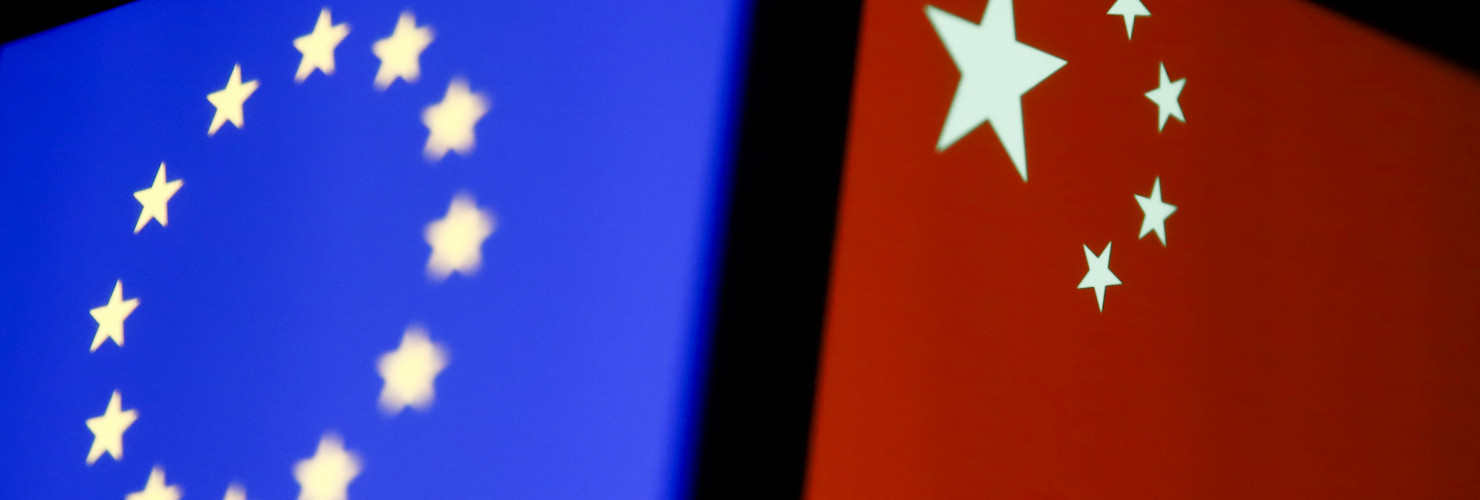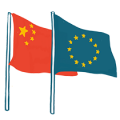

China’s missing offer to Europe ahead of the EU-China summit
But uncertainties ahead make dialogue for the sake of dialogue not bad thing, says Abigaël Vasselier.
The European Union has been preparing for the EU-China summit on December 7-8 with one mantra: “limited expectations.” Long gone is the idea that the hallmark of a successful summit is a long and substantial joint statement. It is time for realism, nuance, and complexity on both sides. Dialogue for the sake of dialogue is maybe not such a bad outcome in the current circumstances.
The EU has always met with China in “good faith”, as European Commission President Ursula von der Leyen recently said at the ECFR-MERICS European China Conference. There are now no illusions about the big issues being solved, but at least a hope of smoothing the rough edges of bilateral relations.
China wants a feel-good moment with Europe in Beijing, with sprinkles and cotillons for the 20th anniversary of the EU-China Comprehensive Strategic Partnership. Beijing would like to see a rectification of the trajectory of EU-China relations ahead of 2024, a year of turbulences and uncertainties in view of the US presidential election. China cannot afford to lose Europe.
Face time with the Chinese President, visa facilitation for a limited number of countries and a surprising lifting of trade barriers imposed on Lithuania will foster a good atmosphere. But China had clearly more to offer to the US at the meeting of Xi Jinping and Joe Biden in San Francisco.
Restoring trust and reducing fallout
China has two wishes for Europe: That the EU and China restore trust and confidence to avoid a continuing downward spiral of bilateral relations, and that the EU’s de-risking strategy does not harm China’s own ambitions. For China, Europe remains a variable in its relationship to the US.
With economic growth at 4 percent, socio-economic challenges such as unemployment, deflation, and mixed signals by the Chinese government on how to best address this, foreign investments are mostly leaving China and companies need to be reassured. Beijing needs European companies to stay in China.
Europe will also matter in ensuring that China reaches its 2035 strategic goal of becoming a technological leader by attaining self-reliance. This is especially important now the US market is closing. China wants to prevent the EU from becoming more protectionist and from weaponizing its trade and economic relations. Messages of concerns and anxiety will be delivered to Europe.
At the same time, the Chinese leadership does not want to acknowledge the correlation between these defense measures and the asymmetry in market openness. The Chinese side has no intention to address the structural challenges Europe is facing in its trade and economy issues with China. At this summit, the EU is likely to increase the price to pay for the continuation of such practice by China.
European leaders have repeatedly told their Chinese counterparts that “de-risking is not decoupling” and that Europe is not turning protectionist. Beijing can live with this as long as it does not come at the expense of its global ambitions. The summit will be the occasion to explain those things once again.
China intends to leverage the EU market, but the question remains of what China has to offer. If Beijing has been unwilling to offer any concessions on structural issues to the US, it will hardly make a different offer to Brussels. Instead, it will try to rebuild trust in the business environment and keep European companies in China by providing limited market access and addressing companies’ concerns.
Containing global controversies
China has given up on Europe endorsing its view of the world as expressed in initiatives like the “Belt and Road Initiative”, and Europe will not allow China to discuss European security architecture. However, Beijing has a strong interest in shaping the European reaction to its global assertiveness.
China is aware that Russia’s war of aggression against Ukraine will be tabled at the summit. Beijing has finally understood that the issue will have a long-term impact on relations. However, President Xi is unlikely to move on this issue, given the “no limits” partnership with Russia. The EU should focus on getting China to engage with Ukraine and take care of the Chinese companies violating sanctions.
The situation in the Taiwan Strait is another topic of contention for both sides: It is very likely that Beijing will refuse to talk about cross-strait relations with the Europeans, who are worried about potential escalation in the region. For China, this heated discussion is reserved to the US.
There is more positive engagement as regards cooperation between China and the EU on global challenges. From debt relief, WTO reform to climate change – Europe has always seen many areas for multilateral cooperation with China, even if Beijing has so far fallen short. Having a statement on climate along the lines the Xi-Biden statement in California may be a way forward.
Talking to stay in contact
Altogether, there is a mismatch in the Chinese proposal to the EU ahead of this summit. On the one hand, China has made only limited, if not nonexistent offers to Europe. On the other hand, its representatives across the continent have been intensely lobbying all capitals to make the summit a success by showcasing the 20th anniversary of the EU-China Strategic Partnership.
European leaders may well end up in Beijing for a feel-good moment with the Chinese leadership and no points scored beyond a photo-op and a few difficult messages hopefully being delivered:
First, as upcoming elections in the US and in Europe make for uncertainty, the EU will remain steadfast towards China: it will work with the US and offer the space to China when interests converge.
Second, Europe is concerned by China’s unfair economic practices and the closing of its society. Europe will protect its market and its citizens if these problems are not addressed.
Finally, the EU has not given up on China, and it is time for Beijing to realize it.
A longer version of this article was first published by China Observers in Central and Eastern Europe (CHOICE) on December 4, 2023.

